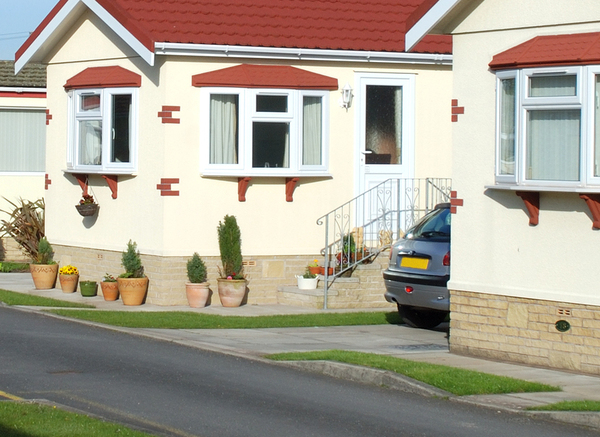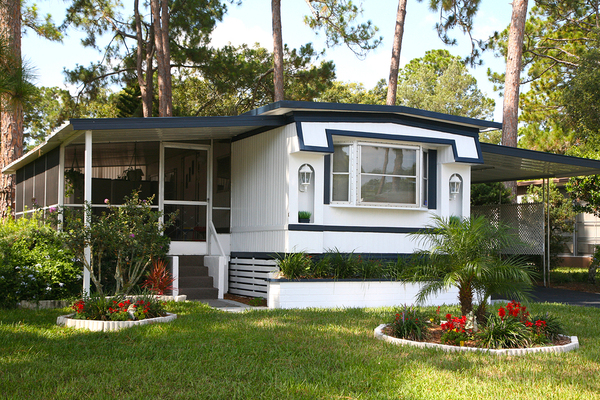A mobile or manufactured home inspection is similar to a general inspection, but it has some special areas of concern. So your mobile home inspection checklist will look a bit different. Not only do factory-built homes have different materials and fabrication methods, they’re more vulnerable to damage. To make the process extra complicated, some systems are neither visible nor accessible.
Before inspecting a mobile or manufactured home, check with your state to learn whether you need additional training and certification or licensing.
Factory-Built Have Some Major Differences
Inspection checklist items:
- Label or certificate indicating the home’s age
- Electrical wiring issues including GFCI protection
- Location of meter
- Proper electrical grounding for factory-built home
- DIY electrical updates and repairs
Mobile or manufactured homes are built in a factory and transported to the site where they’re set up or installed. Some are single-wide. But sectioned homes such as double-wides are transported separately and connected on site. The materials are usually much lighter than a stick-built home, and in some cases, the systems, such as HVAC, are smaller.
According to Inspectapedia, many mobile and manufactured homes have 1x structural boards instead of the 2x lumber that’s used in a stick built house. And even after it’s installed, the home is anchored but not permanently fixed to the site.
Electrical is a special concern. In older mobile homes, expect to find aluminum wiring. GFCI protection is often missing, and DIY repairs and upgrades are common. And Inspectapedia’s building code reference for mobile and manufactured homes, they often have a sub panel; the meter is located away from the structure. Metal sheathed homes should be grounded.

Skirting can make accessibility more difficult.
Some Systems are Difficult to Find and Access
Inspection checklist items:
- Insulation
- Ducts
- Water in the crawl space
- Bulging membrane under the home indicating a trapped leak
Space is a concern, so accessibility is a problem with many mobile and manufactured homes.
In the crawl space, wiring, plumbing and insulation and duct work might not be visible. That’s because the underside of a mobile or manufactured home is often covered in a sheathing, sealed in a plastic membrane or both.
The same is true for attic spaces. Access might be limited to a small ceiling panel inside a bedroom closet.
Inside the home, home inspectors might have trouble locating the water heater. Unlike a stick-built home, mobile and manufactured homes might conceal them in space-saving and unusual places. Where the water heater isn’t visible, look for wall panels instead of a utility closet door.
_600x.jpg)
Transportation can affect the whole structure.
Mobile Homes Face a Greater Risk of Damage
Inspection checklist items:
- Design and condition of foundation / piers
- Improper pier shims
- Bent or damaged I-beams
- Skirting
- Presence, condition and installation methods of hurricane straps or tie-downs
- Water sealed seams on roofing, exterior wall sheathing and penetrations such as doors and windows
- Improper wood-burning appliances, furnaces or stoves
Stick-built homes are built on a permanent foundation. But mobile and manufactured homes are usually installed on block piers instead of a concrete slab or block foundation, so they’re not as stable.
Weather events can wreak havoc. And although many factory-built homes appear to have a solid, stone or brick foundation, it’s often decorative skirting.
Watch for wood shims between the underside of mobile and manufactured homes and top of the pier foundation. Because DIY repairs are common, also check for unstable piers and unusual shimming materials and methods.
Hurricane straps or tie-downs help stabilize mobile and manufactured homes. They’re connected to the underside of the home and anchored to the ground, steel beams or a slab. Some are literal metal straps, but other straps are solid metal rods or posts. In high winds and other severe weather events, straps might not provide enough protection.
Water infiltration at the roof, sheathing, windows, doors and skylights is another concern. Transportation can cause damage before the home is installed. Roof and exterior wall sheathing might have broken seals, and so might windows, doors and skylights.
Additionally, some mobile home owners may install a wood-burning stove or another heating appliance that’s not suitable for the home’s construction. Watch for oversized appliances and improper installation.
Mobile and Manufactured Home Additions Sometimes Fail
Inspection checklist items:
- Independent structural support for additions
- Separations between additions and the mobile or manufactured home
- Interior and attic leaks along home addition seams
Additions make inspecting a factory-built home even more interesting. Many mobile and manufactured homes are small, and the owner decides to build on later.
Mobile and manufactured homes are designed to flex, even if the resident never feels it. If the piers become unstable or the home settles, additions such as an extra bedroom, deck or porch can separate from the main structure. That leaves the interior and exterior of the home unstable and vulnerable to water infiltration.
McGarry and Madsen home inspectors explain that additions can’t rely on the mobile home for structural support. So an addition can connect to the home, but it needs its own foundation.
Mobile and manufactured homes might look similar to stick-built homes, but they have numerous issues that are unique to the design, materials and setup. Transportation can create structural damage before the home arrives at the lot. Improper installation can leave the home at risk of dame in the years to come. And upgrades require professional work, so many DIY alterations become unstable.
Your factory-built professional home inspection checklist will probably include several items that aren’t part of a standard inspection. Refer to the HUD Mobile Home Standards guide at Inspectapedia to learn more about what makes manufactured housing so different.
Check out our home inspection app for Android and iPhone and start building your own checklist for mobile and manufactured homes.

